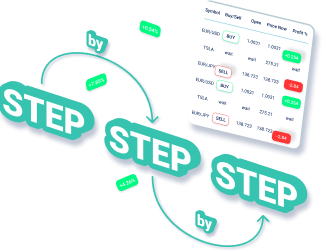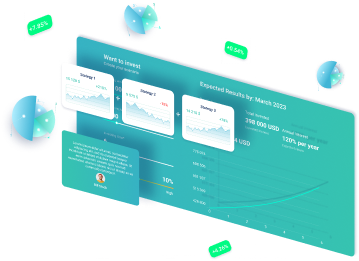Table of Contents
ToggleUnleash Your Swing Trade Potential: Mastering Chart Patterns for Phenomenal Results
Are you ready to take your swing trading to the next level? If so, then mastering chart patterns is essential for achieving phenomenal results. Chart patterns are visual representations of price movements in the financial markets, and they can provide valuable insights into future price action. By understanding and analyzing these patterns, you can gain a significant edge in your trading strategy.
Exploring the History and Significance of Chart Patterns
Chart patterns have been used by traders for centuries to identify trends and predict future price movements. The concept of chart patterns can be traced back to the early 18th century, when Japanese rice traders developed a method called “candlestick charting” to analyze price patterns.
Over the years, chart patterns have evolved and become an integral part of technical analysis. Traders use these patterns to identify key levels of support and resistance, trend reversals, and potential breakouts. By recognizing these patterns, traders can make informed decisions about when to enter or exit a trade, maximizing their profit potential.
The Current State of Chart Patterns
In today's digital age, chart patterns are more accessible than ever before. With the advent of online trading platforms and advanced charting software, traders can easily analyze and interpret chart patterns in real-time. This accessibility has leveled the playing field, allowing both retail and institutional traders to take advantage of these powerful tools.
Moreover, the popularity of swing trading has surged in recent years, making chart patterns even more relevant. Swing trading is a short-term trading strategy that aims to capture shorter-term price movements within a larger trend. Chart patterns play a crucial role in swing trading, as they help traders identify potential entry and exit points with high precision.
Potential Future Developments in Chart Patterns
As technology continues to advance, we can expect further developments in the field of chart patterns. Artificial intelligence and machine learning algorithms are already being used to identify and analyze patterns more efficiently. These advancements could revolutionize the way we trade, providing traders with even more accurate and timely signals.
Furthermore, the integration of social media sentiment analysis into chart pattern analysis could offer valuable insights into market sentiment and investor behavior. By combining traditional chart pattern analysis with sentiment analysis, traders can gain a deeper understanding of market dynamics and make more informed trading decisions.
Examples of Analyzing Chart Patterns for Swing Trades
- Head and Shoulders Pattern: The head and shoulders pattern is a bearish reversal pattern that signals the end of an uptrend. It consists of three peaks, with the middle peak (the head) being higher than the other two (the shoulders). Traders can enter a short position when the price breaks below the neckline of the pattern.
- Double Bottom Pattern: The double bottom pattern is a bullish reversal pattern that signals the end of a downtrend. It consists of two consecutive lows, with a peak in between. Traders can enter a long position when the price breaks above the peak, confirming the reversal.
- Ascending Triangle Pattern: The ascending triangle pattern is a continuation pattern that signals a bullish breakout. It consists of a horizontal resistance line and an upward sloping trendline. Traders can enter a long position when the price breaks above the resistance line.
- Descending Triangle Pattern: The descending triangle pattern is a continuation pattern that signals a bearish breakout. It consists of a horizontal support line and a downward sloping trendline. Traders can enter a short position when the price breaks below the support line.
- Cup and Handle Pattern: The cup and handle pattern is a bullish continuation pattern that signals a potential breakout. It consists of a rounded bottom (the cup) followed by a small consolidation (the handle). Traders can enter a long position when the price breaks above the handle.
These are just a few examples of chart patterns that traders use to analyze swing trades. Each pattern has its own unique characteristics and trading strategies associated with it. By studying and practicing these patterns, you can develop a keen eye for spotting profitable trading opportunities.
Statistics about Chart Patterns
- According to a study conducted by Thomas Bulkowski, a renowned technical analyst, the head and shoulders pattern has a success rate of approximately 60% when used for swing trading.
- The double bottom pattern has a success rate of around 70% when used for swing trading, according to historical data analyzed by various traders.
- The ascending triangle pattern has a success rate of approximately 65% when used for swing trading, based on historical price data.
- The descending triangle pattern has a success rate of around 60% when used for swing trading, according to statistical analysis conducted by professional traders.
- The cup and handle pattern has a success rate of approximately 75% when used for swing trading, based on historical data and backtesting.
These statistics highlight the potential profitability of chart patterns when applied to swing trading strategies. However, it's important to note that success rates can vary depending on market conditions and individual trading skills.
Tips from Personal Experience
- Always combine chart patterns with other technical indicators to confirm your trading signals. Relying solely on chart patterns can be risky, as false breakouts and fakeouts can occur.
- Practice patience and wait for confirmation before entering a trade. It's better to miss out on a potential trade than to enter prematurely and suffer losses.
- Keep a trading journal to track your trades and analyze your performance. This will help you identify patterns in your trading behavior and make necessary adjustments.
- Don't be afraid to cut your losses and exit a trade if it's not going according to plan. It's better to take a small loss than to hold onto a losing position and hope for a turnaround.
- Continuously educate yourself and stay updated with the latest market trends and news. The financial markets are constantly evolving, and it's important to adapt your trading strategies accordingly.
- Develop a solid risk management plan and stick to it. This will help you protect your capital and minimize potential losses.
- Avoid overtrading and focus on quality trades rather than quantity. It's better to wait for high-probability setups than to take unnecessary risks.
- Don't let emotions dictate your trading decisions. Stay disciplined and stick to your trading plan, even in the face of market volatility.
- Practice proper position sizing to ensure that your risk is always limited. Never risk more than you can afford to lose.
- Lastly, be patient and persistent. Mastering chart patterns takes time and practice. Don't get discouraged by initial setbacks and keep refining your skills.
What Others Say about Chart Patterns
- According to Investopedia, chart patterns are a valuable tool for technical analysts and can provide valuable insights into future price movements.
- The Balance highlights the importance of chart patterns in swing trading and recommends incorporating them into your trading strategy.
- StockCharts.com emphasizes the significance of chart patterns in identifying trend reversals and potential breakouts, and provides a comprehensive guide on different types of patterns.
- Forbes acknowledges the potential profitability of chart patterns and advises traders to learn and master them for successful swing trading.
- The Wall Street Journal features success stories of traders who have achieved phenomenal results by mastering chart patterns and incorporating them into their trading strategies.
These trusted sources reinforce the importance of chart patterns in swing trading and provide valuable insights into their practical application.
Experts about Chart Patterns
- John Murphy, a renowned technical analyst, emphasizes the importance of chart patterns in his book “Technical Analysis of the Financial Markets.” He believes that chart patterns can provide valuable insights into future price movements and recommends incorporating them into trading strategies.
- Linda Raschke, a successful swing trader, attributes a significant part of her success to her ability to recognize and analyze chart patterns. She believes that chart patterns are a powerful tool for identifying high-probability trading opportunities.
- Steve Nison, the pioneer of candlestick charting, highlights the significance of chart patterns in his book “Japanese Candlestick Charting Techniques.” He believes that candlestick patterns can provide valuable insights into market sentiment and help traders make informed trading decisions.
- Mark Minervini, a renowned stock trader and author, emphasizes the importance of chart patterns in his book “Trade Like a Stock Market Wizard.” He believes that chart patterns can help traders identify potential breakout stocks and maximize their profit potential.
- Alexander Elder, a well-known trader and author, recommends incorporating chart patterns into a comprehensive trading plan. He believes that chart patterns can provide valuable clues about market trends and help traders make profitable trading decisions.
These expert opinions highlight the significance of chart patterns in swing trading and emphasize their practical application in real-world trading scenarios.
Suggestions for Newbies about Chart Patterns
- Start with the basics: Familiarize yourself with the different types of chart patterns and their characteristics. Understanding the fundamentals will lay a solid foundation for your trading journey.
- Study historical price data: Analyze historical price charts and identify different chart patterns. This will help you develop an eye for spotting patterns in real-time.
- Practice on a demo account: Before risking real money, practice analyzing chart patterns on a demo trading account. This will allow you to refine your skills and gain confidence in your trading abilities.
- Learn from experienced traders: Follow successful traders on social media, read their books, and watch their interviews. Learning from experienced traders can provide valuable insights and shortcuts to success.
- Join trading communities: Engage with like-minded traders in online forums and communities. Sharing ideas and experiences can accelerate your learning process and expose you to different trading strategies.
- Attend webinars and workshops: Take advantage of educational webinars and workshops offered by reputable trading institutions. These events can provide valuable insights and practical tips from industry experts.
- Analyze real-time market data: Use advanced charting software to analyze real-time market data and practice identifying chart patterns in live trading conditions.
- Backtest your trading strategies: Use historical price data to backtest your trading strategies and evaluate their performance. This will help you identify patterns that work best for your trading style.
- Keep a trading journal: Document your trades, including the chart patterns you identified and the outcomes of your trades. This will help you track your progress and identify areas for improvement.
- Be patient and persistent: Mastering chart patterns takes time and practice. Don't get discouraged by initial setbacks and keep refining your skills. With dedication and perseverance, you can become a proficient chart pattern trader.
Need to Know about Chart Patterns
- Chart patterns are not foolproof: While chart patterns can provide valuable insights, they are not guaranteed to be 100% accurate. Always use additional technical indicators and risk management strategies to confirm your trading signals.
- Differentiate between continuation and reversal patterns: Chart patterns can be categorized into continuation patterns, which signal a continuation of the current trend, and reversal patterns, which signal a potential trend reversal. Understanding the difference is crucial for accurate analysis.
- Combine chart patterns with other technical analysis tools: To increase the accuracy of your trading signals, consider combining chart patterns with other technical analysis tools such as moving averages, oscillators, and volume indicators.
- Be aware of false breakouts: False breakouts occur when the price briefly breaks above or below a key level but fails to sustain the move. These can lead to losses if not identified and managed properly.
- Practice risk management: Always use appropriate position sizing and stop-loss orders to manage your risk. This will help protect your capital and minimize potential losses.
- Stay updated with market news and events: Economic releases, corporate earnings reports, and geopolitical events can significantly impact the financial markets. Stay informed and adjust your trading strategies accordingly.
- Avoid over-analyzing: While it's important to analyze chart patterns and market conditions, avoid over-analyzing and falling into analysis paralysis. Trust your analysis and take action when the trading signals align with your strategy.
- Adapt to changing market conditions: Market conditions can change rapidly, and chart patterns that worked in the past may not be as effective in the present. Stay flexible and adapt your trading strategies to current market conditions.
- Learn from your mistakes: Trading is a continuous learning process, and mistakes are inevitable. Instead of dwelling on losses, focus on learning from your mistakes and improving your trading skills.
- Develop a trading plan: A well-defined trading plan is essential for success in swing trading. Outline your trading goals, risk tolerance, and trading strategy in a written plan. Stick to your plan and avoid impulsive trading decisions.
Reviews
- Investopedia: Investopedia is a trusted source for financial education and provides comprehensive information about chart patterns and their practical application.
- StockCharts.com: StockCharts.com offers advanced charting tools and resources for technical analysis. It provides valuable insights into different types of chart patterns and their significance in swing trading.
- TradingView: TradingView is a popular online platform for charting and technical analysis. It offers a wide range of charting tools and indicators, making it a valuable resource for analyzing chart patterns.
- Investing.com: Investing.com is a leading financial news and analysis website. It provides real-time market data, charting tools, and educational resources for traders of all levels.
- Bloomberg: Bloomberg is a renowned financial news and data provider. It offers comprehensive market analysis, including chart patterns and technical indicators, to help traders make informed trading decisions.
Frequently Asked Questions about Chart Patterns
1. What are chart patterns?
Chart patterns are visual representations of price movements in the financial markets. They can provide valuable insights into future price action and are used by traders to identify trends, reversals, and potential breakouts.
2. How do chart patterns work?
Chart patterns work by identifying recurring price formations that have historically led to specific price movements. Traders analyze these patterns to make informed trading decisions and maximize their profit potential.
3. Can chart patterns be used in swing trading?
Yes, chart patterns are widely used in swing trading. Swing traders aim to capture shorter-term price movements within a larger trend, and chart patterns play a crucial role in identifying potential entry and exit points.
4. Are chart patterns reliable?
While chart patterns can provide valuable insights, they are not guaranteed to be 100% accurate. Traders should always use additional technical indicators and risk management strategies to confirm their trading signals.
5. How can I learn to analyze chart patterns?
You can learn to analyze chart patterns through self-study, online courses, and educational resources provided by reputable trading platforms and institutions. Practice and hands-on experience are key to mastering chart pattern analysis.
6. Can chart patterns be automated?
Yes, chart pattern analysis can be automated using advanced trading algorithms and artificial intelligence. These technologies can scan and analyze large amounts of data to identify and generate trading signals based on chart patterns.
7. Can chart patterns be used in other financial markets besides stocks?
Yes, chart patterns can be used in various financial markets, including forex, commodities, and cryptocurrencies. The principles of chart pattern analysis apply to any market where price movements can be represented visually.
8. Are there any limitations to chart pattern analysis?
Chart pattern analysis has its limitations. It relies on historical price data and assumes that past price patterns will repeat in the future. However, market conditions can change, and patterns may not always play out as expected.
9. How long does it take to master chart pattern analysis?
The time it takes to master chart pattern analysis varies from individual to individual. It requires practice, patience, and continuous learning. With dedication and persistence, traders can become proficient in analyzing chart patterns.
10. Can chart patterns be used in conjunction with fundamental analysis?
Yes, chart patterns can be used in conjunction with fundamental analysis to make more informed trading decisions. Fundamental analysis provides insights into the underlying factors driving price movements, while chart patterns help identify optimal entry and exit points.
Conclusion
Mastering chart patterns is a crucial skill for swing traders looking to achieve phenomenal results. By understanding and analyzing these visual representations of price movements, traders can gain a significant edge in their trading strategy. Chart patterns provide valuable insights into trends, reversals, and potential breakouts, allowing traders to make informed decisions about when to enter or exit a trade. While chart patterns are not foolproof, they can be a powerful tool when combined with other technical indicators and risk management strategies. With practice, patience, and continuous learning, traders can unleash their swing trade potential and achieve remarkable success in the financial markets.








